Button Shy Games have the most readily identifiable hook in all of board game publishing. You know when you pick up a Button Shy game that two things will be true:
- The game will (almost certainly) consist of no more than 18 cards.
- The game will come in a pocket-sized wallet.
Both of these semi-immutable facts are central to the Button Shy experience. I’m in the embarrassing but very real habit of counting the cards any time I pick up a new Button Shy title. Right around card #10, without exception, I think to myself “This’ll be the one. They’re going to overshoot the moon.” They never do. There are always 18 cards. If you get a pack of expansions, there will probably be six cards per expansion, with a maximum of three expansions per pack. They’re consistent. You have to respect that.

As for the wallet, don’t underestimate it. I first picked up Sprawlopolis in Germany, where the game is published by Frosted Games and packaged in a small box. It wasn’t the same. Pulling a small box out of your pocket doesn’t surprise people. You hear nary a “What is that?” We all know what that small box is. It’s a game. A wallet, though? People aren’t ready for a wallet game. It destabilizes them. They chuckle. They hoot. They inquire. They’re sold on the game before you even begin.
Button Shy doesn’t squander that interest; their games are always approachable. I didn’t include approachability as one of the immutable truths of Button Shy publications, because it could change. Maybe Carl Chudyk will send them an email one day. As it stands, though, I’ve yet to play a Button Shy game with a teach that lasts more than two or three minutes. These are games that want you to pull them out at a café when you and a friend have twenty minutes to kill before you go see a movie. These are games that beg to be played on an airplane tray when it’s not in the upright and locked position. These are games that exist for those fleeting moments between other, larger moments. I call them “Sure, why not” games—which is not to say I wouldn’t choose to play them on any gaming night.
Given Button Shy’s relentless release schedule of one game per month, there are a lot of titles in the library. They were kind enough to furnish Meeple Mountain with a collection of what founder Jason Tagmire considers to be the company’s definitive releases, the games that represent the company’s ethos. Let’s take a look.
Sprawlopolis / Agropolis
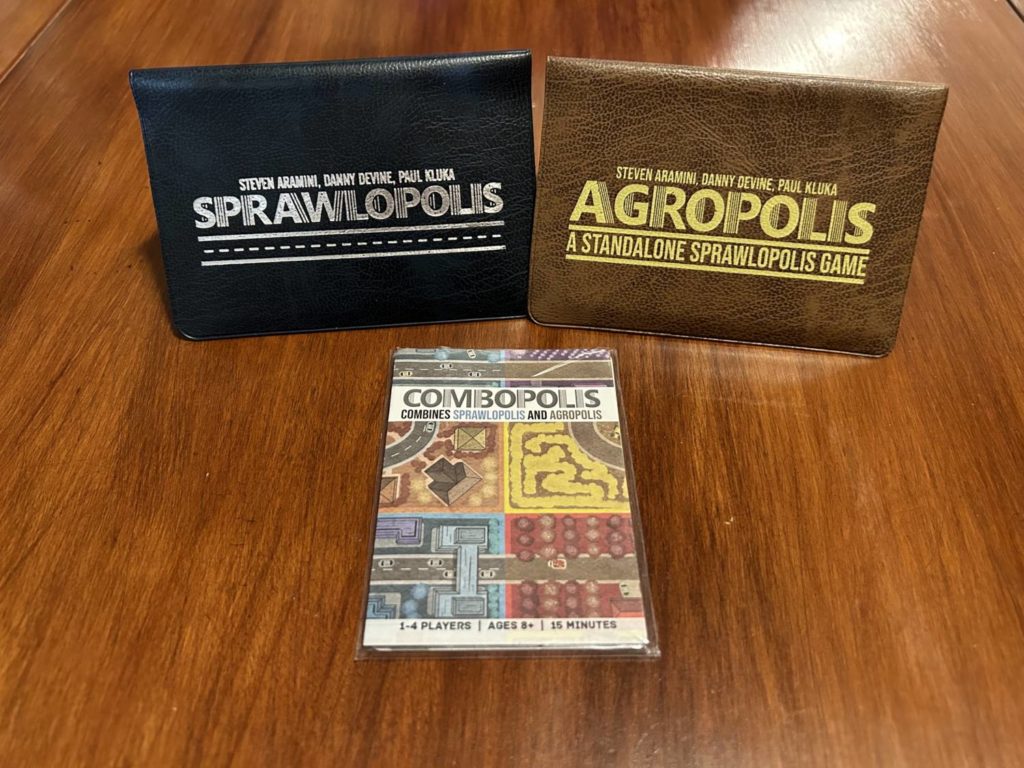 If you only know one Button Shy game, it’s probably Sprawlopolis. The game, released in 2018, has players working together to build an urban center. They do this by playing cards, one per turn, onto the table, trying to plan their way into a city that best meets whichever three scoring criteria were randomly selected at the beginning of play. There’s also the matter of maintaining contiguous roadways, which adds to the challenge.
If you only know one Button Shy game, it’s probably Sprawlopolis. The game, released in 2018, has players working together to build an urban center. They do this by playing cards, one per turn, onto the table, trying to plan their way into a city that best meets whichever three scoring criteria were randomly selected at the beginning of play. There’s also the matter of maintaining contiguous roadways, which adds to the challenge.
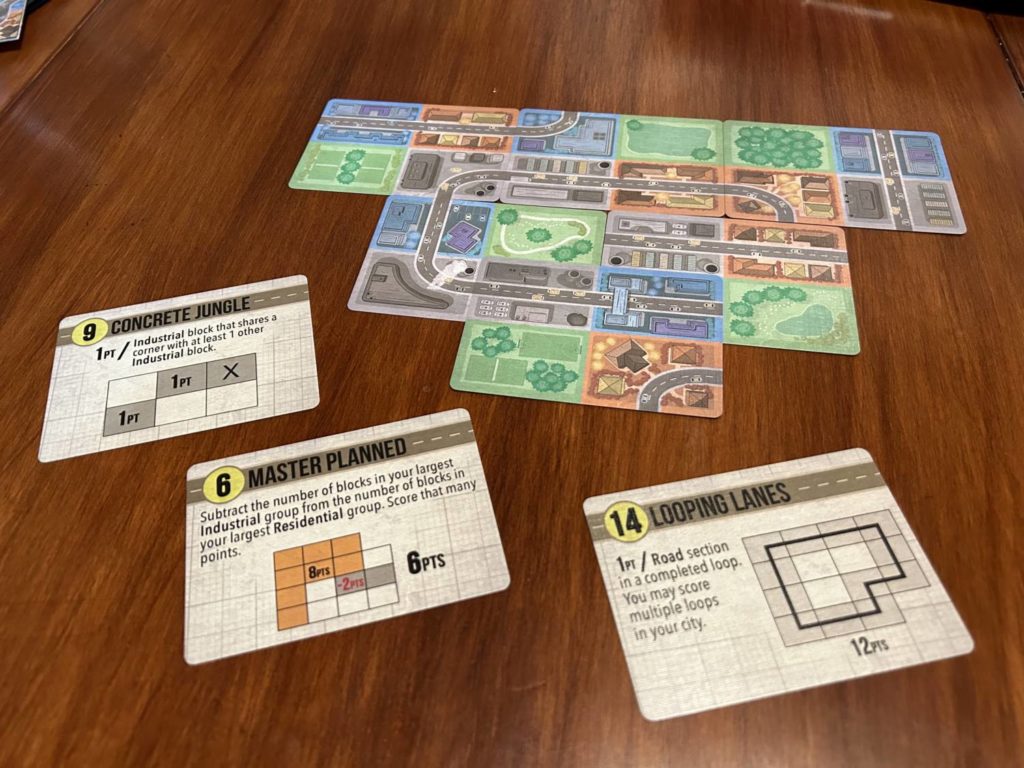
While Sprawlopolis is designed to be played by up to four people, it has gained most of its notoriety as a solo game. The cooperative elements are fun, but there’s something satisfying about puzzling everything out on your own. The game has also proven popular enough to spawn several expansions, all of which add more cards and new scoring challenges to the pool. If you enjoy Sprawlopolis, the expansions are certainly affordable and worth adding to your set. They’ll add to the replayability without introducing any extra fuss.
Agropolis, released in 2021, is set in an agricultural area. The two games are pretty much identical as far as how they play, though Agropolis addresses some balance issues and includes smaller details beyond the type of terrain in each section. Though Agropolis was designed to work on its own, the two games can be combined with the Combopolis expansion, which provides custom goals and rules.
Tussie Mussie
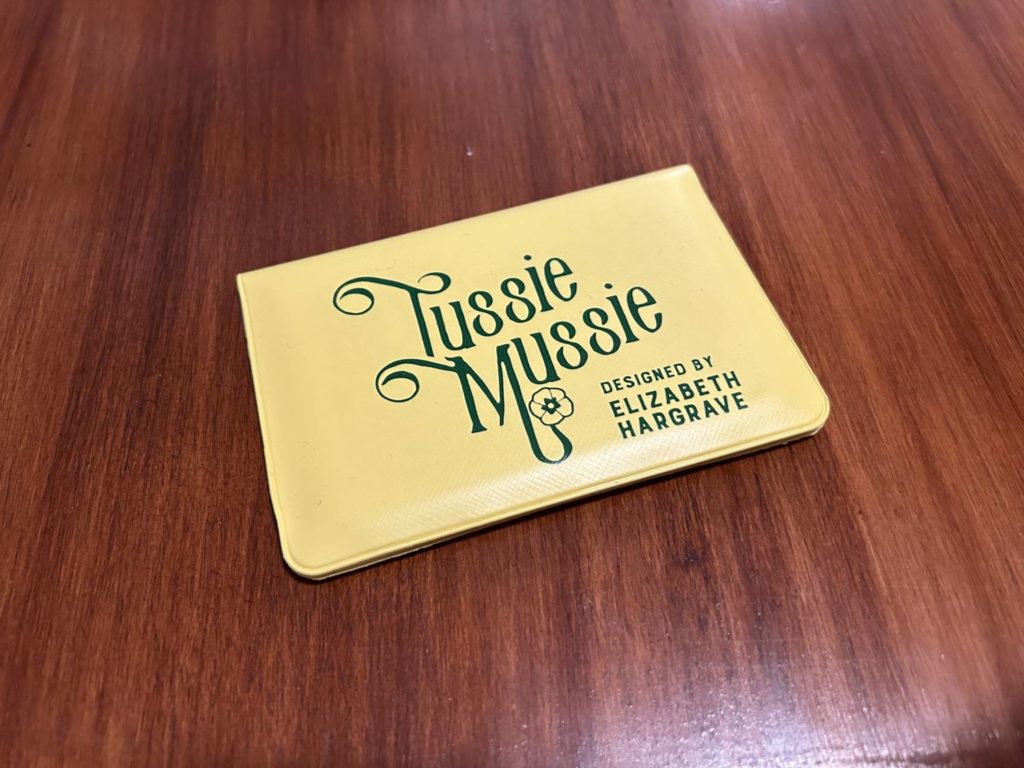 Thanks to its design pedigree—you may know designer Elizabeth Hargrave from her other, slightly better-known 2018 release Wingspan—this flower-drafting game is more well-known than might otherwise be expected.
Thanks to its design pedigree—you may know designer Elizabeth Hargrave from her other, slightly better-known 2018 release Wingspan—this flower-drafting game is more well-known than might otherwise be expected.
In Tussie Mussie, players take turns drawing two cards off the top of the deck and examining both. The flowers on those cards will help score points at the end of the game, through a combination of raw points value and various unique effects. After taking a moment to look at the cards, the player places both down on the table. One of the cards will be placed face-up, so everyone can see it, while the other is placed face-down. The next player—the package says the game is for 2-4 players, though I find it best at 2—chooses one to add to their own tableau, while the first player takes the other.
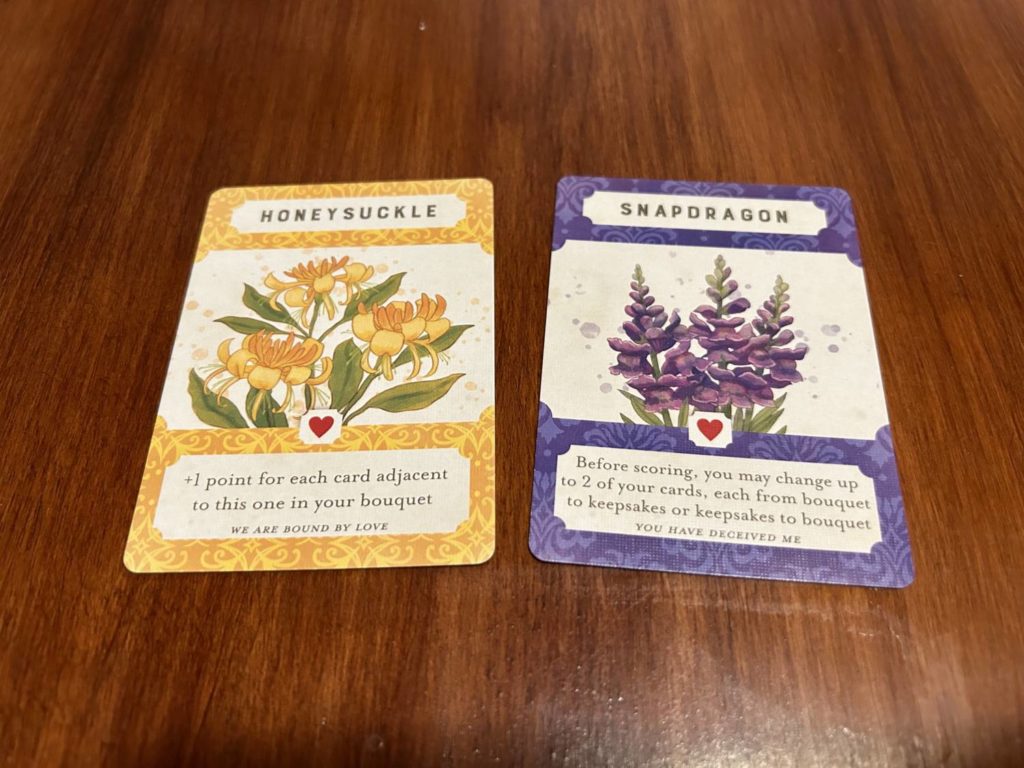 Choosing what card to put out in the open is a fun source of tension. Do you show your opponent the card you hope they’ll take so they leave you the other, or do you show them the one you hope they leave you? If you’re taking a card, do you take the obvious bait, or do you try to out-double-think? As a nice bonus, Tussie Mussie takes up very little table space, making it a great choice for travel play.
Choosing what card to put out in the open is a fun source of tension. Do you show your opponent the card you hope they’ll take so they leave you the other, or do you show them the one you hope they leave you? If you’re taking a card, do you take the obvious bait, or do you try to out-double-think? As a nice bonus, Tussie Mussie takes up very little table space, making it a great choice for travel play.
Food Chain Island
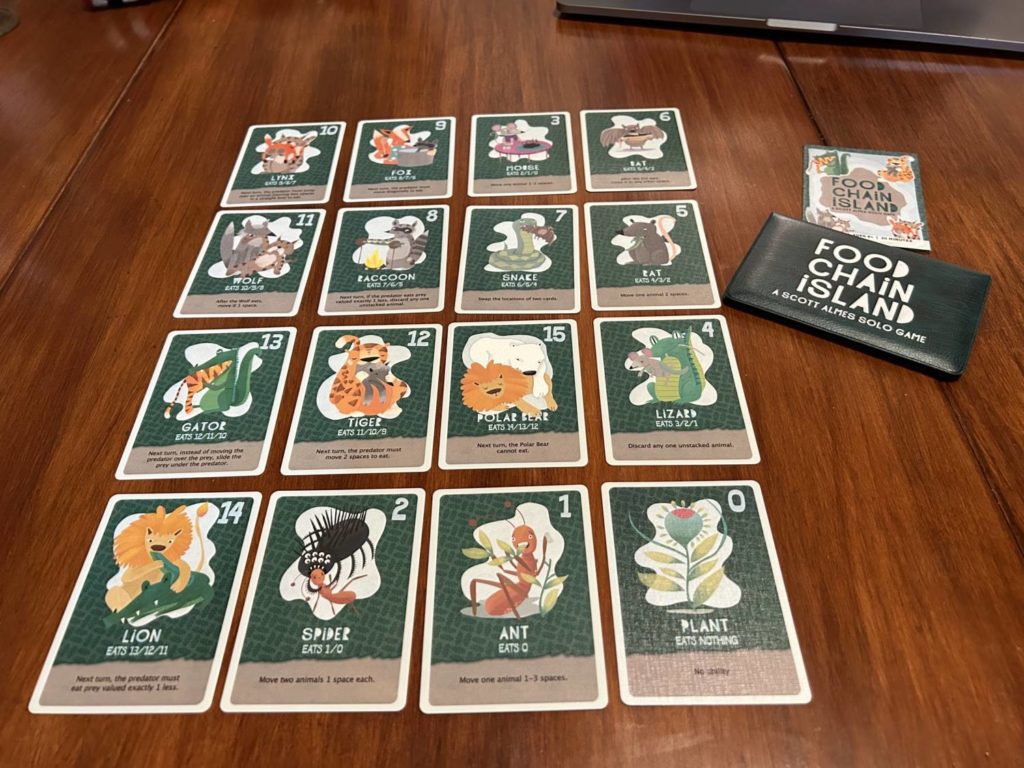 Food Chain Island is a solo game about, well, the food chain. Each card shows an animal, a number, and an ability. On your turn, you move one card onto another, indicating that the animal on top has eaten the animal beneath. Generally speaking, higher numbers move onto lower numbers, not the other way around, and movement has to be adjacent.
Food Chain Island is a solo game about, well, the food chain. Each card shows an animal, a number, and an ability. On your turn, you move one card onto another, indicating that the animal on top has eaten the animal beneath. Generally speaking, higher numbers move onto lower numbers, not the other way around, and movement has to be adjacent.
That said, each animal has a special ability. Using these intelligently will help you to clear the island. The goal is to get down to as few animals as you can. You properly win the game if you can manage to get all the way down to one.
I really enjoy Food Chain Island. It plays quickly, about 10-15 minutes including setup, and it’s rewarding. Figuring out a particularly clever series of maneuvers to clear out more cards is satisfying. With familiarity, you start to think multiple steps ahead. It isn’t a chapel of a skill ceiling, but everyone loves a gazebo on a spring afternoon.
In Vino Morte
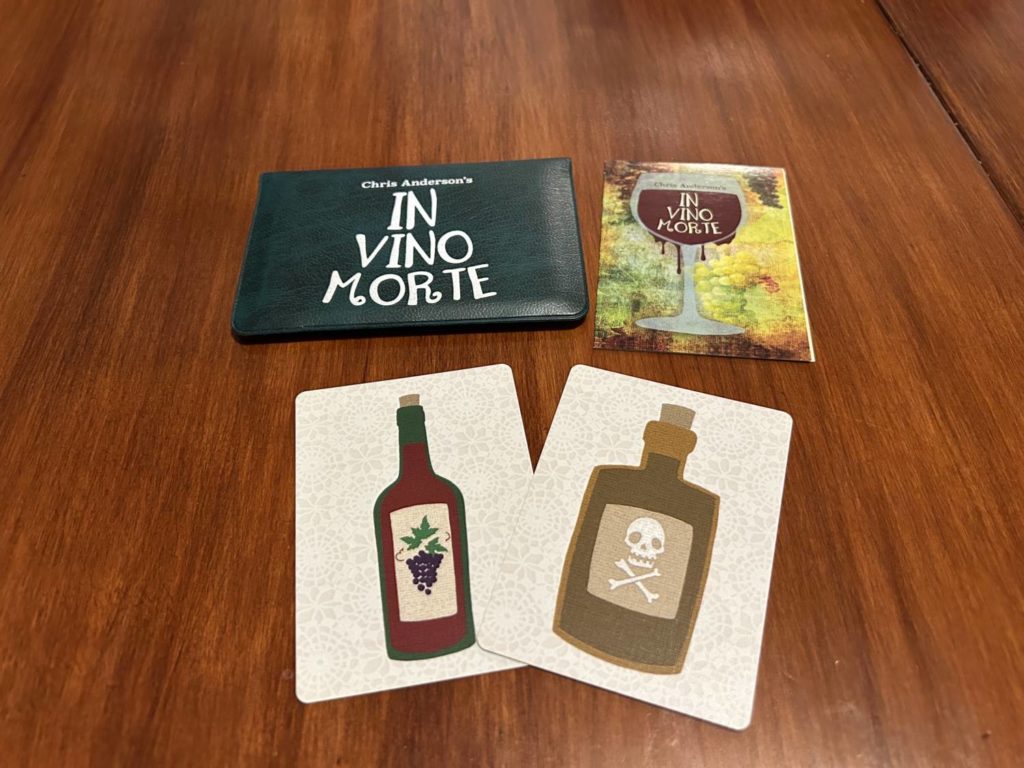 Button Shy’s entry in the party game-o-sphere, In Vino Morte, has players trying to outlive their opponents. Everyone is dealt two cards, and can choose on their turn to either flip one over, thereby drinking the contents, or to swap with one of their fellow players. If the card you flip over is revealed to be wine, you survive to the next round. If it’s poison, you’re out.
Button Shy’s entry in the party game-o-sphere, In Vino Morte, has players trying to outlive their opponents. Everyone is dealt two cards, and can choose on their turn to either flip one over, thereby drinking the contents, or to swap with one of their fellow players. If the card you flip over is revealed to be wine, you survive to the next round. If it’s poison, you’re out.
In Vino Morte is about as simple to play as it sounds, and it is that simplicity that makes the game work. There are no complicated rules, the playtime is brisk even at 8 or 9 players, and you’ll spend the whole time giggling nervously.
Hierarchy
When I spoke with Jason Tagmire about games for this article at PAX Unplugged last December, he handed me the other titles you see listed. I recognized all the games, and it made sense to include them. These are the big guns in the Button Shy armory. I wanted more, though. I get bored. I don’t just want the greatest hits. Give me a b-side.
I asked Tagmire if he had a low-key favorite that wasn’t included among the games I already had in hand. “What’s the weird little game that you’re particularly proud of?” After a moment, he handed me Hierarchy.
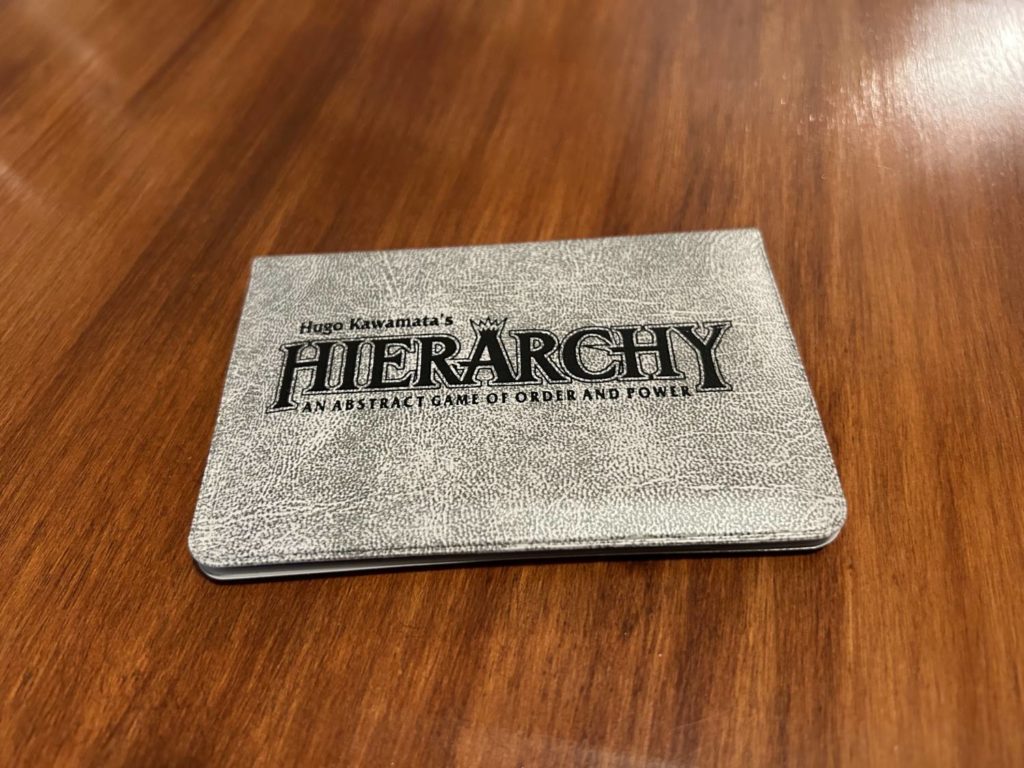 This is a two-player game by designer Hugo Kawamata. There are fourteen cards, each showing a character from Japanese folklore. An assassin, a leper, an emperor, an usurper, a dragon, an imposter, and so on. Each player is dealt seven cards, all face-up, and they take turns playing one card to the middle of the table. The goal of the game is to force a situation where your opponent cannot play a card on their turn. Each character, with the exception of the Imposter, has a number. A new card can only be played over a card with a lower number.
This is a two-player game by designer Hugo Kawamata. There are fourteen cards, each showing a character from Japanese folklore. An assassin, a leper, an emperor, an usurper, a dragon, an imposter, and so on. Each player is dealt seven cards, all face-up, and they take turns playing one card to the middle of the table. The goal of the game is to force a situation where your opponent cannot play a card on their turn. Each character, with the exception of the Imposter, has a number. A new card can only be played over a card with a lower number.
That probably doesn’t sound very interesting. Whoever has the 13 wins, right? Each character, in addition to their number, has an effect. These have significant impact on the board state, changing the eligibility rules and keeping the game from becoming a question of who drew the biggest card. Tagmire noted that he loves the open information, that both players know exactly what cards they and their opponent have left. There is an amount of skill here, an ability to foresee the branching possibilities that come with each play. It’s sharp.
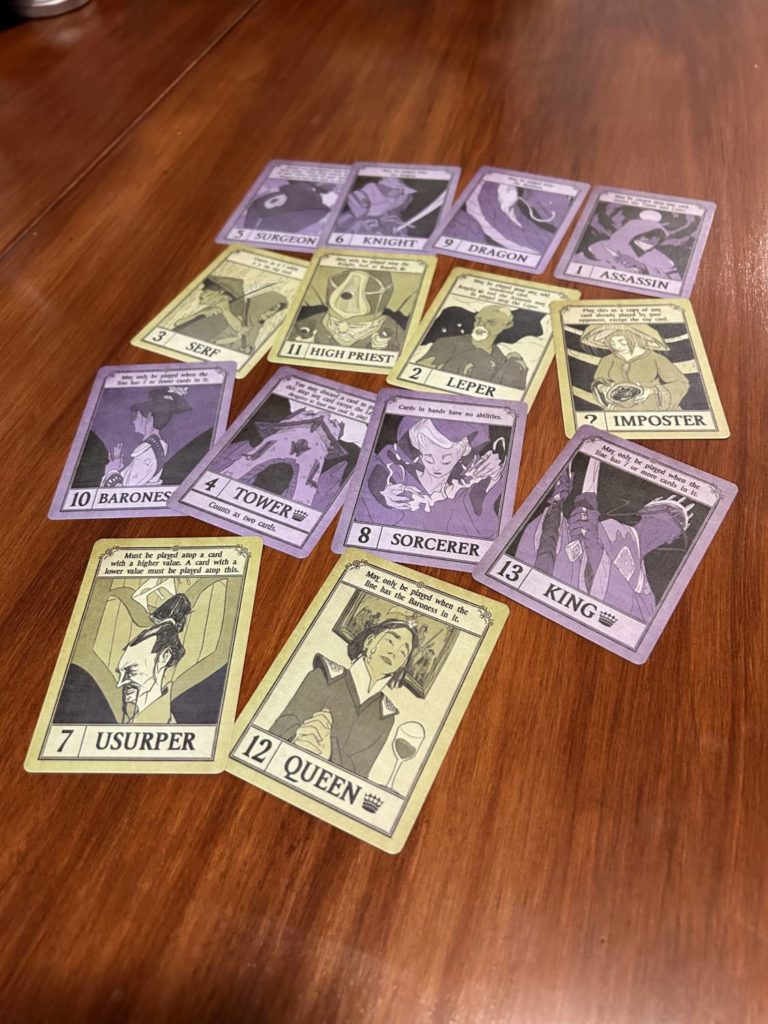 Though Hierarchy isn’t marketed as a solo game, I’ve enjoyed playing against myself, seeing if I can come to a different result with the same deal by choosing different plays at different points. I haven’t played Hierarchy enough yet to have a firm personal opinion of the game as a whole. What I do know, and what I can tell you, is that I definitely want to play more.
Though Hierarchy isn’t marketed as a solo game, I’ve enjoyed playing against myself, seeing if I can come to a different result with the same deal by choosing different plays at different points. I haven’t played Hierarchy enough yet to have a firm personal opinion of the game as a whole. What I do know, and what I can tell you, is that I definitely want to play more.
Skulls of Sedlec
 People love Skulls of Sedlec. I myself backed the full version with its various expansions on Kickstarter, purely on the strength of the good things I’d heard about it. Designed for 2-3 players, though best at 2—this is a pattern, yes—the game has you take on the role of a novice monk helping to rearrange the skulls in a mausoleum. It’s a great, great theme.
People love Skulls of Sedlec. I myself backed the full version with its various expansions on Kickstarter, purely on the strength of the good things I’d heard about it. Designed for 2-3 players, though best at 2—this is a pattern, yes—the game has you take on the role of a novice monk helping to rearrange the skulls in a mausoleum. It’s a great, great theme.
Each card shows two skulls of varying professions, which you’ll be setting out onto your pyramidal mausoleum shelves. Each profession has a different scoring condition. Each lover, for example, scores when adjacent to another lover. Royals score when there are peasants and other royals beneath them. That sort of thing. It’s all pleasantly thematic.
The game is set up with six graves (piles of cards) in the middle of the table. On your turn, you can Dig (flip over the top card in one of those piles), Collect (pick up a revealed card), or Place (set a card from your hand into your mausoleum). You can only do one, which makes Dig a risky proposition: do you risk revealing something your opponent wants? This would give the second player a massive advantage if the game didn’t have a hand limit of two cards. Once you have two in your hand, you have to take the Place action before you can pick anything else up. The game ends once all mausoleums are full. All players then calculate their scores, and the winner is the person with the most points.
Skulls of Sedlec is a solid tableau-builder, and popular for good reason. The rules are straightforward, the art is good, the scoring conditions for each skull are clear, and the expansions add some wonderful professions, like Poet and Castle Guard. I love the scoring condition of the Poet, who earns you points for unpaired Lovers. There are also two solo expansion modules, which strip the pretense of player interaction out of the game entirely and leave you with the puzzle that it really is most of the time anyway.
ROVE: Results-Oriented Versatile Explorer
ROVE is a solo spatial puzzle themed around a planetary exploration robot. ROVE is also, to my mind, the jewel in Button Shy’s crown. I love this little puzzle. The robot is made up of six modules, each represented by a card. Over the course of the game, which plays in about 15-20 minutes, you attempt to complete a series of missions by reconfiguring the modules into various shapes. Each module has its own pattern of movement and a powerful, one-time use ability. You’ll use movement points, generated by playing the cards in your hand, to move the various parts of the module around.
The trick is that the movement cards themselves have module configurations on them, and by playing those cards when the modules match the shown configuration, you will get significantly more movement points than you would otherwise. This creates a series of overlapping spatial puzzles, where you’re trying to meet the needs of not just the immediate mission, but trying to do so in a way that will set you up to start the next mission with a whole bunch of movement points.
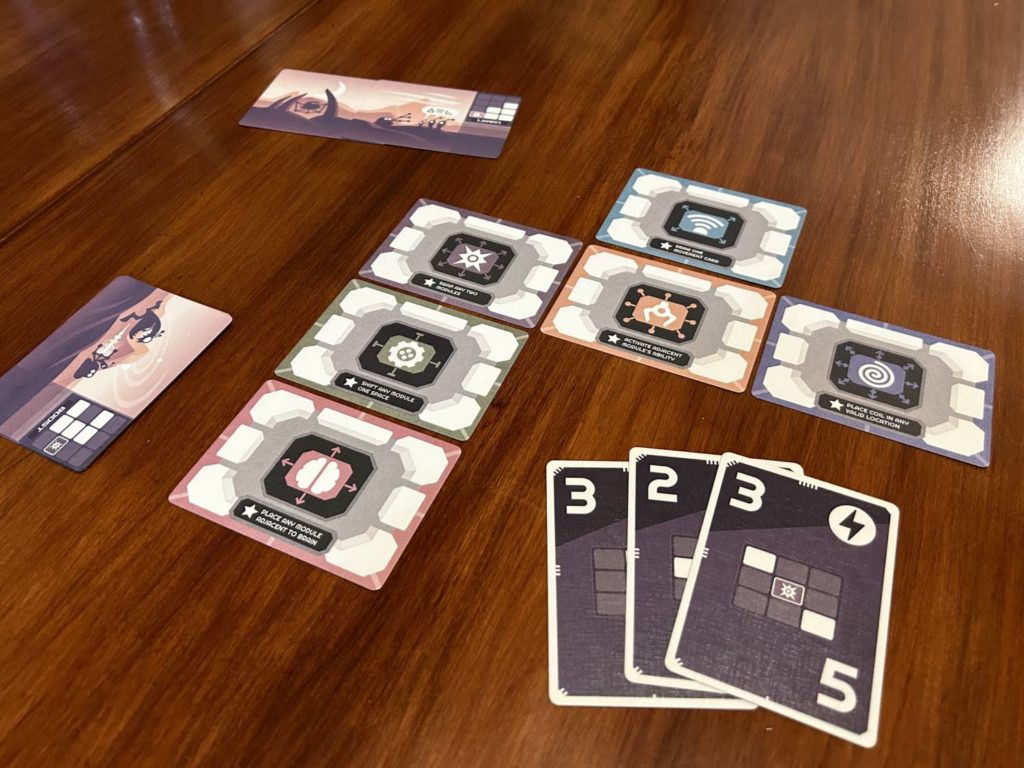
The beauty of this design is twofold: the puzzles are individually simple enough that you don’t get discouraged, but they overlap in such a way that you are constantly challenged. The goal of the basic game is to complete seven missions without running out of movement points and abilities.
Like Sprawlopolis and Skulls of Sedlec, ROVE has several excellent expansions. Each subtly tweaks the decision space, and taken as a whole, they give the game a tremendous amount of variety. Flora & Fauna, Icy Incidents, Alien Activities, and Cosmic Crisis all introduce fun twists without increasing the rules overhead, and Flora & Fauna includes a second set of modules with alternate powers to mix and match with the original set.
Don’t Be Shy
Though not included in this article, Meeple Mountain has reviewed other Button Shy games, including Personal Space, Supertall, Turbo Drift, and Circle the Wagons.
Button Shy is a great publisher, rightly lauded for pushing the idea space for small card games in all sorts of directions. Their subscription model—you can sign up via Patreon to receive the newest release each month—may come to be seen as a harbinger of models other publishers, like Capstone Games, are starting to explore. They also encourage fan participation, hosting regular design contests based around different themes. More than a few of their titles have come out of those 18 Card Challenges.
A Button Shy logo on the packaging guarantees that the game will take up minimal time, minimal space, and minimal financial resources, while providing something approaching the maximum gaming experience. That’s nothing to be shy about.


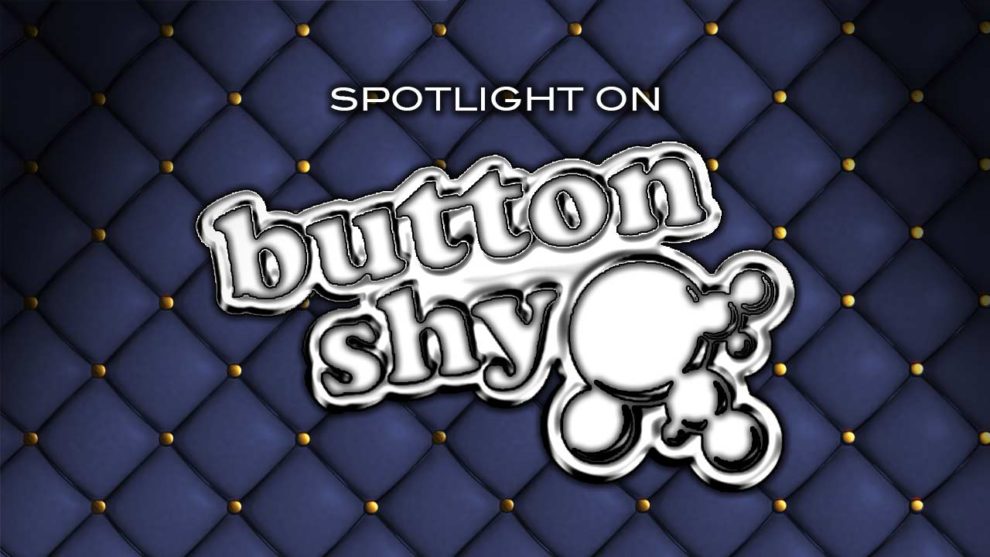
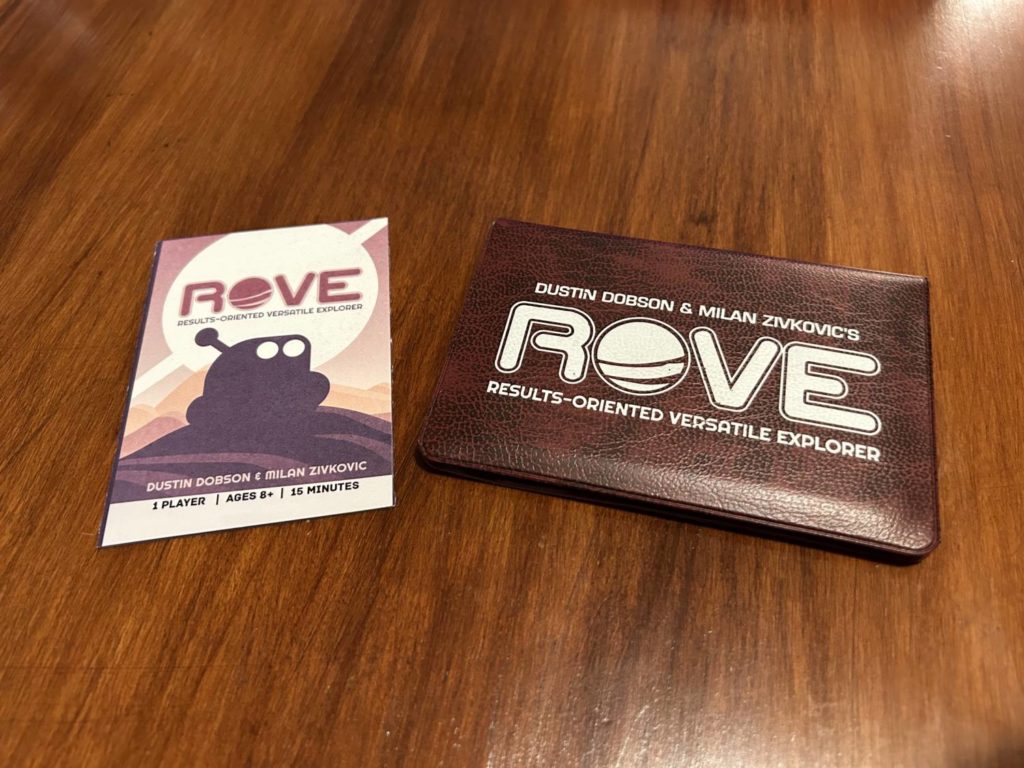








Add Comment